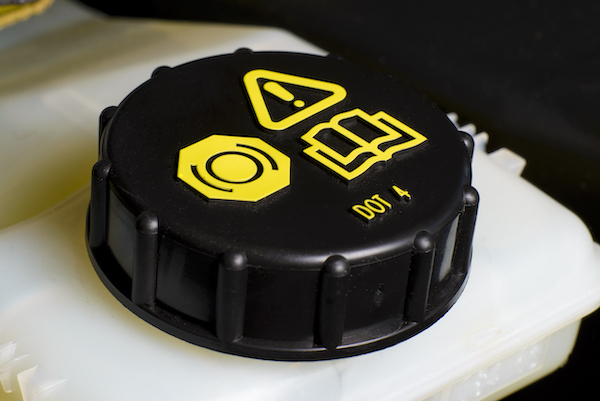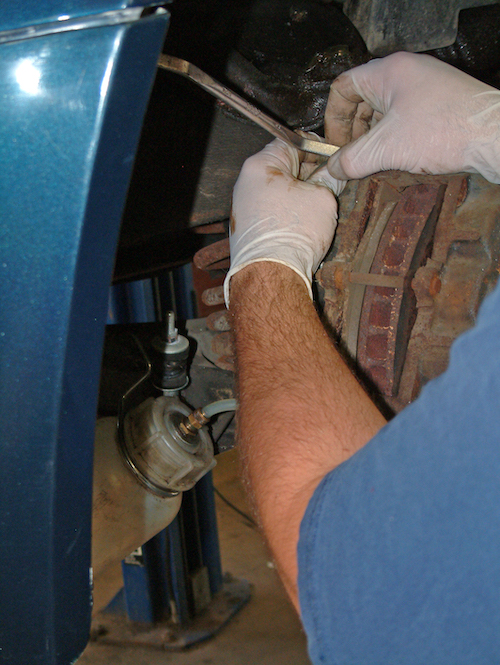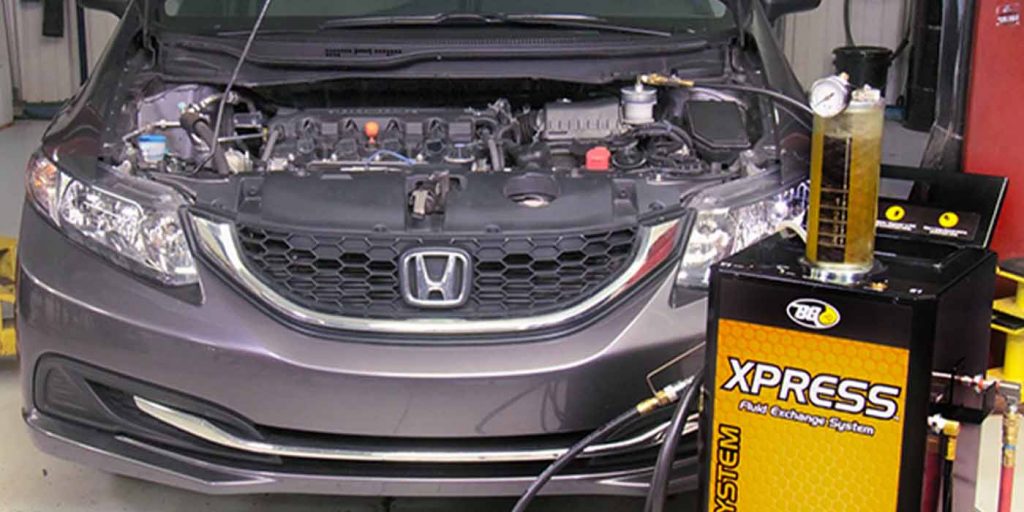Sell This Procedure As A Safety Service – And Prove It
Shops often take a beating from the media for selling brake fluid flushes. The reason consumer advocates complain about it is because the owner’s manual rarely indicates a fluid flush service interval in the maintenance schedule – brake fluid maintenance typically falls outside the range of the service schedule. But if you read deeper into the service information and owner’s manual, OE engineers do say brake fluid is an item that should be regularly inspected and replaced if contaminated.

Now, brake fluid analysis and, if necessary, replacement is more critical than ever before. Since 2008, almost every vehicle has come with some form of ABS and includes a hydraulic control module mounted under the hood or on a frame rail. Since 2012, every light vehicle sold has been equipped with stability control that has added valves and complexity to the hydraulic control unit.
The hydraulic control unit needs fresh brake fluid to operate and protect valves and passages from corrosion. An additive package helps control the pH, cavitation and viscosity.

Bleeding and Flushing
Replacing a vehicle’s brake fluid requires more tools and skills than a glass bottle and clear tubing. Old-school methods like the two-man or gravity bleeding techniques still work, but they are not efficient at replacing large volumes of brake fluid in a short period of time. Machines and devices that can power- or pressure-bleed a system can make a fluid flush as efficient and profitable as possible.
Power and pressure bleeders are changing along with the systems they service. In the past, only 15-30 psi was required to pressure-bleed the system. But some new ABS modulators with electronic brake proportioning may require 50-60 psi to bleed or flush the system. If you can’t get your pressure bleeder to work under these conditions, look at the service information for the required equipment or pressure setting.
On their own, gravity, manual or power bleeding methods can’t completely flush the volume of fluid that is in the ABS modulator. Inside the modulator, there might be as much as five ounces of dirty fluid after flushing. The only sure way to flush this fluid is to use a scan tool to actuate the valves in the hydraulic control unit. Be aware that the worst fluid is trapped in the ABS valves and passages due to their non-integral design.

Inspection and Analysis
Visual inspection alone of the fluid can be extremely misleading. Because the color of brake fluid can vary from clear to shades of blue, even if the brake fluid is discolored, it might still meet the system’s performance requirements. Also, the brake fluid in the master cylinder reservoir can have a far different appearance than the fluid contained in the calipers.
Boiling point testing was one of the first methods of determining the condition of the brake fluid and still works today as an indication of how much moisture the brake fluid has absorbed. It is a valid test that many state inspections use. But it can’t test the condition of the additive package that helps control corrosion in the brake system. That analysis can be performed with special tools that measure the water content by the passing light or electricity through the fluid.
Measuring the pH of the fluid can capture the condition of the additive packages in all brake fluid. Additives that regulate the pH of the fluid have a limited lifespan and can absorb only so much acid before they are depleted. When the buffers are gone, the pH of the fluid can rapidly rise. Testing the pH of the brake fluid can be performed with a test strip, which can be used to justify brake fluid services to the customer.
Another method is to measure the amount of copper in the brake fluid. Copper is used to coat the insides of hydraulic brake lines. As the additive package in the brake fluid wears out and corrosion occurs, the copper is pulled off the insides of the brake lines and becomes suspended in the brake fluid. The more copper in the brake fluid, the more corrosive the brake fluid becomes. Testing of copper concentrations can be performed with test strips, and the results can be shared with the customer.
Consumers don’t always understand the importance of certain service procedures so you’ll likely need to educate them on their vehicle’s needs. Using the owner’s manual and other resources to explain their system’s condition will allow you to get past the impression of trying to sell unnecessary services.














